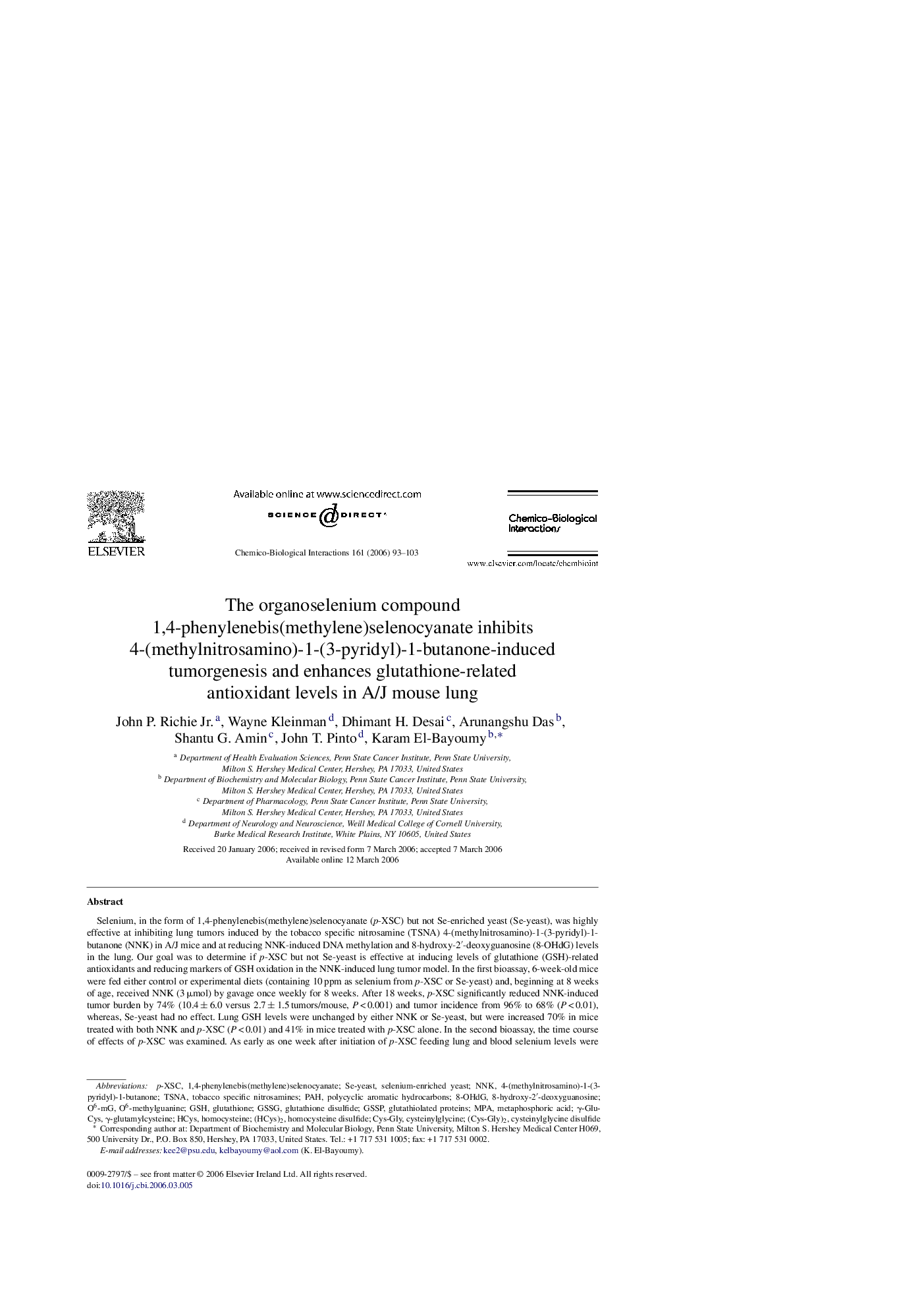| کد مقاله | کد نشریه | سال انتشار | مقاله انگلیسی | نسخه تمام متن |
|---|---|---|---|---|
| 2582024 | 1130218 | 2006 | 11 صفحه PDF | دانلود رایگان |

Selenium, in the form of 1,4-phenylenebis(methylene)selenocyanate (p-XSC) but not Se-enriched yeast (Se-yeast), was highly effective at inhibiting lung tumors induced by the tobacco specific nitrosamine (TSNA) 4-(methylnitrosamino)-1-(3-pyridyl)-1-butanone (NNK) in A/J mice and at reducing NNK-induced DNA methylation and 8-hydroxy-2′-deoxyguanosine (8-OHdG) levels in the lung. Our goal was to determine if p-XSC but not Se-yeast is effective at inducing levels of glutathione (GSH)-related antioxidants and reducing markers of GSH oxidation in the NNK-induced lung tumor model. In the first bioassay, 6-week-old mice were fed either control or experimental diets (containing 10 ppm as selenium from p-XSC or Se-yeast) and, beginning at 8 weeks of age, received NNK (3 μmol) by gavage once weekly for 8 weeks. After 18 weeks, p-XSC significantly reduced NNK-induced tumor burden by 74% (10.4 ± 6.0 versus 2.7 ± 1.5 tumors/mouse, P < 0.001) and tumor incidence from 96% to 68% (P < 0.01), whereas, Se-yeast had no effect. Lung GSH levels were unchanged by either NNK or Se-yeast, but were increased 70% in mice treated with both NNK and p-XSC (P < 0.01) and 41% in mice treated with p-XSC alone. In the second bioassay, the time course of effects of p-XSC was examined. As early as one week after initiation of p-XSC feeding lung and blood selenium levels were increased nearly six- and two-fold, respectively. Increases of 120% for GSH and 65% for Cys were observed in p-XSC groups compared to controls within one week after initiation of p-XSC feeding (P < 0.01). The levels of protein-bound:free GSH ratios and Cys ratios were significantly decreased in p-XSC-treated mice, regardless of NNK status, suggesting a decrease in the levels of oxidative stress. Altogether, these results indicate that p-XSC is a potent inducer of GSH and related thiol antioxidants in the lung leading to decreased levels of oxidative stress and suggest that p-XSC inhibits tumor formation, in part, by protecting against oxidative damage.
Journal: Chemico-Biological Interactions - Volume 161, Issue 2, 10 June 2006, Pages 93–103